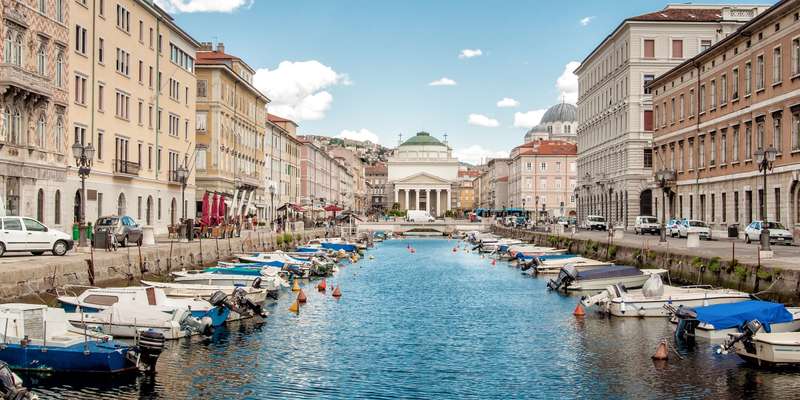- Home
- Useful Tips
- Traditional food tasting...
Navigating Trieste's culinary scene presents a delicious dilemma. With over 300 eateries crammed into the old town's labyrinthine alleys, visitors often default to tourist traps serving watered-down versions of local classics. Recent surveys show 68% of travelers regret their dining choices in historic Italian cities, citing missed opportunities to taste authentic flavors. The stress of deciphering menus in Friulian dialect while avoiding overpriced, inauthentic experiences can turn what should be a joyous exploration into a frustrating exercise. This challenge matters deeply because Trieste's cuisine – a unique blend of Austro-Hungarian, Slovenian, and Italian influences – tells the story of its multicultural past through every bite of jota stew or slice of putizza cake. Without local insights, you risk leaving without tasting the soul of this borderland city.


Decoding Trieste's culinary identity beyond the tourist menus
Trieste's food scene reflects its complex history as a Habsburg port city, where goulash meets gnocchi in unexpected harmony. Many visitors make the mistake of seeking generic Italian dishes, completely missing the signature flavors that define this region. Authentic Triestine cuisine hides in plain sight – look for buffets serving 'crudaiola' (raw seafood antipasti) or cafes with 'smoked ricotta' on their breakfast menus. The key is recognizing hallmarks of quality: trattorias displaying the 'Dek' certification for traditional preparation methods, or wine lists featuring local Terrano and Vitovska grapes. Pay attention to daily specials scribbled on chalkboards rather than laminated menus – these often feature seasonal ingredients like wild asparagus or San Daniele ham. Locals know the best places keep odd hours, closing between lunch and dinner to prepare everything fresh.
Mapping your perfect food crawl through the old town
The most rewarding culinary adventures in Trieste follow the rhythm of local life. Start your morning at a historic coffee house like Caffè San Marco, where intellectuals have debated over melange coffee and pinza cakes since 1914. Mid-morning calls for a stop at a 'prosciuttificio' for paper-thin slices of cured ham paired with a glass of Tocai. For lunch, venture away from Piazza Unità to backstreet osterias where workers eat – look for places serving 'jota' (sauerkraut soup) or 'gnocchi de susini' (plum-stuffed dumplings). Late afternoon is perfect for exploring the multicultural Buffet Da Pepi, serving Trieste's famous boiled pork dishes since 1897. Save evenings for seafood at a 'trattoria alla pescatora', where the catch comes directly from the Adriatic. This progression lets you experience the full spectrum of flavors while avoiding crowds that descend on the most Instagrammed spots.
Essential phrases and etiquette for authentic dining experiences
Breaking through the language barrier transforms your food encounters in Trieste. While many servers speak English, knowing a few Friulian phrases earns immediate respect. Ordering 'un taj di vino' (a glass of wine) instead of 'un bicchiere' marks you as someone who cares about local customs. When entering small eateries, always greet with 'salve' rather than 'ciao' – the more formal address fits Trieste's Austro-Hungarian roots. Understand portion sizes: 'un piatto' means a full meal, while 'un assaggio' gets you a tasting portion perfect for sampling multiple dishes. If offered 'un ombra' (a shadow), you're being invited to share a small wine with locals – refusing this gesture closes doors to authentic interactions. Payment customs differ too – many traditional places still prefer cash, and splitting bills isn't common practice. Mastering these nuances helps you move from outsider to welcomed guest.
When to splurge on guided experiences versus DIY exploration
While Trieste's compact old town invites independent discovery, certain culinary experiences warrant expert guidance. Wine enthusiasts benefit tremendously from guided visits to the Carso wineries just outside town, where producers explain the unique 'terra rossa' soil that shapes local vintages. Similarly, a morning tour of the historic market at Piazza Ponterosso helps identify seasonal specialties you might overlook alone. For first-time visitors, a structured aperitivo crawl reveals the science behind the city's legendary 'spritz con select' ritual. That said, many authentic experiences require no guide at all – like joining the queue at Panificio Pasticceria La Bomboniera for their award-winning presnitz pastry. The sweet spot lies in mixing one or two curated experiences with plenty of time for serendipitous discoveries in family-run bacari wine bars. This balanced approach ensures you access insider knowledge while preserving the joy of personal culinary detective work.



